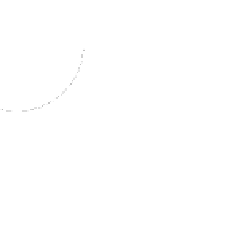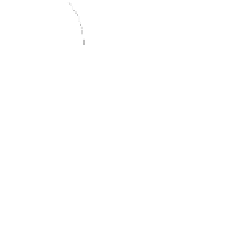Graphics Reference
In-Depth Information
scene, while
n
(
P
)
denotes the unit surface normal at
P
. The set of all “outward”
vectors at
P
is
S
+
(
P
)
, that is,
S
+
(
P
)=
{
v
:
v
·
n
(
P
)
≥
0
}
.
(26.62)
We'll sometimes generalize this and write
S
+
(
n
)=
{
v
:
v
·
n
≥
0
}
(26.63)
for the “positive hemisphere with respect to some vector
n
.”
Second,
v
i
is a vector pointing in this outward hemisphere
toward
some source
of light, so the radiance reaching
P
from this source is
L
(
t
,
P
,
−
v
i
,
λ
)
. The nega-
tive sign is important:
v
i
points toward the light source, but light flows
from
the
source
toward P
, hence in direction
v
i
is a mnemonic for “incom-
ing” rather than an index, which is why it is typeset in roman rather than italic.
We'll also often use
−
v
i
. The “i” in
v
o
, a direction in which light
leaves
from
P
(often toward the
observer's eye).
The units of spectral irradiance are J m
−
1
s
−
1
nm
−
1
or W m
−
2
nm
−
1
;the
steradians have been integrated out.
Looking at the formula for irradiance, it becomes clear that the surface at
which the light is arriving is not really important—only the surface point and
normal vector are. Thus, we can regard irradiance instead as a function on
all
of
R
3
, but with an additional argument to indicate the normal direction:
)=
E
(
t
,
P
,
n
,
λ
L
(
t
,
P
,
−
v
i
,
λ
)
v
i
·
n
d
v
i
.
(26.64)
{
v
:
v
i
·
n
≥
0
}
R
3
S
2
R
+
; its
With this revised formulation, the domain of
E
is
R
×
×
×
interpretation is that
E
(
t
,
P
,
n
,
)
is the density of energy that
would
arrive at a
surface perpendicular to
n
at the point
P
from all directions in the half-space
determined by
n
, and having wavelength
λ
.
It's often useful to speak of the
irradiance due to a single source.
To define
this, we imagine painting everything in the scene completely black except the
single source. We then use the resultant radiance field
L
in place of
L
in Equa-
tion 26.64.
In the event that we are measuring the irradiance due to a single area light
source of constant radiance,
L
0
, that is, the radiance leaving every point of the
light source in any direction is the number
L
0
, and the solid angle subtended by
the light source lies at approximately a single latitude (if, for example, it's approx-
imately disk-shaped and quite small), and it's completely visible from the point
P
, then the integral can be well approximated by assuming that the dot product
v
i
·
λ
r
Q
m
n
d
n
is constant; since all other terms in the integral are constant as well, we can
evaluate this approximation directly.
P
Inline Exercise 26.12:
Show that if, in Figure 26.30, the distance from a disk-
shaped uniform light source of radius
r
, center
Q
, normal vector
m
, and radi-
ance
L
0
to the point
P
is more than 5
r
, and the source is completely visible
from
P
, then the irradiance at
P
from the light is well approximated by
Figure 26.30: The rule of five.
r
2
L
0
(
Q
−
P
)
·
n
(
P
−
Q
)
·
m
π
.
(26.65)
Q
−
P
4
This is sometimes called the
rule of five.
































